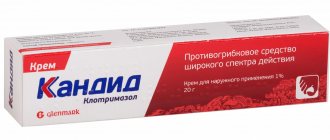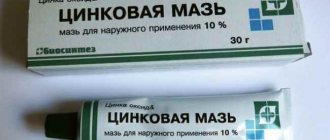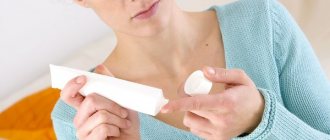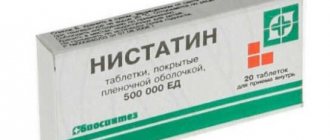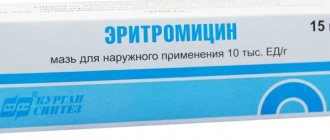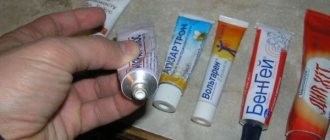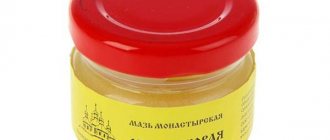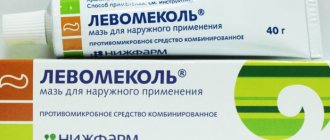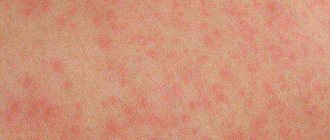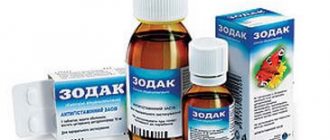How to make a compress from Vishnevsky ointment?
An amazing composition proposed by military surgeon A.V.
Vishnevsky back in 1927, called balsamic liniment, or Vishnevsky ointment, and today it is a popular remedy used to treat wound infections, abscesses, and soft tissue infiltrates. In every family, the knowledge has been passed on from mouth to mouth for several generations that a compress with Vishnevsky ointment helps heal wounds and resolve purulent inflammation of the skin and soft tissues.
It has a distinct, special smell that can hardly be confused with anything else. The ointment owes its specific aroma, ability to quickly heal wounds, and remove foci of inflammation to the natural ingredients included in its composition: birch tar, xeroform, castor oil:
- Birch tar. It has been used since ancient times to treat hair loss, cleanse purulent wounds, treat inflammatory skin diseases, eczema, psoriasis.
Due to the thick oily consistency of liniment, the main method of application is a compress with Vishnevsky ointment.
What is the difference between Vishnevsky ointment and Levomekol ointment?
Levomekol ointment contains the immunostimulant Methyluracil and the antibiotic Levomycetin. The ointment is prescribed for the treatment of trophic ulcers, burns and purulent wounds, as well as other dermatological diseases of an infectious nature.
Levomekol has a more pronounced effect than Vishnevsky ointment. Another advantage of Levomekol ointment is that it does not have such a pronounced unpleasant odor.
The doctor must determine which ointment to use to treat a specific disease, based on the severity of the skin infection and the general condition of the patient. If a quick effect is needed, then Levomekol with an antibacterial component should be prescribed. With slight suppuration, preference should be given to Vishnevsky ointment.
The antibiotic included in the ointment Levomekol is able to penetrate the blood and have a systemic effect on the body. Therefore, this drug is not recommended for use by women carrying a child.
Therapeutic effect
Despite the successes of the pharmaceutical industry, the emergence of new modern antibiotics, anti-inflammatory drugs, the use of Vishnevsky’s composition remains relevant to this day for the treatment of purulent wounds, the rapid resolution of inflammatory tissue infiltration, due to its undeniable advantages. Distinctive features are:
- Does not contain toxic impurities, the composition consists only of natural ingredients.
- Subject to storage conditions, the shelf life is practically unlimited.
- It has no pronounced adverse reactions or obvious contraindications.
- Can be used for patients of any age.
- Has a strong anti-inflammatory effect.
Vishnevsky ointment is one of the safest, most effective means used for the treatment of wounds in surgical practice; it is successfully used in gynecology and coloproctology.
Used as an external remedy. Liniment should not be taken internally.
The most common way it is recommended to use Vishnevsky ointment is a compress.
Application areas are:
- Any inflammatory diseases of the skin, subcutaneous fat with purulent contents or discharge.
The ointment penetrates dressings well and retains its therapeutic effect when applying a compress for at least 8 hours.
Disadvantages of ointment
However, not all doctors recognize Vishnevsky’s ointment for acne as a panacea. There is an opinion that it has warming properties that contribute to the ripening of ulcers and should not be treated with ointment. When applying the ointment, a film forms on the wound. Oxygen does not flow under this film, and the process of development of harmful microbes begins and new inflammation may begin.
A side effect can also be considered the fact that when applying Vishnevsky ointment, the skin is irritated and swelling may occur in the affected area. But not all patients may have such a reaction. After 2-3 days, redness and swelling may subside. Consult your doctor whether you can use Vishnevsky ointment to treat boils and acne, and whether you are allergic to any component.
If you have no contraindications, then you can safely use the ointment.
Doctors do not recommend using Vishnevsky ointment on the face for too long. Otherwise, a rash and itching may appear on the skin. In any case, if you have a problem such as acne, consult a dermatologist.
Methods of application
There are three fundamentally different ways of possible use of the ointment:
- It is allowed to apply liniment to the skin after preliminary hygienic cleaning of the wound surface.
- The most effective method of application is a bandage with ointment or a compress. In fact, these two options are very similar and involve long-term exposure of the medicinal composition to the affected area. Castor oil, which is the basis of the ointment, has a local warming effect. With prolonged contact with the affected area, it promotes the most complete effect of the components included in the product. A pronounced therapeutic effect of the ointment can be achieved by applying a bandage or making a compress for at least 6–8 hours.
The technique of applying bandages with ointment for a longer effect is popular among doctors and patients.
Other Applications
The areas of application of Vishnevsky ointment are quite extensive. What else does Vishnevsky ointment help with:
1. Thanks to its warming effect, Vishnevsky ointment is good for diseases such as lymphadenitis, lymphangitis, sinusitis, external otitis, mastitis, lactostasis, radiculitis.
2. The ointment is also irreplaceable for various bruises, damage to the skin with subsequent suppuration of the wound.
3. For insect bites, to quickly resolve the bite site and reduce itching, apply the ointment directly to the wound.
4. Traditionally, with the help of this drug, back in the middle of the last century, they fought against various skin diseases: psoriasis, all kinds of dermatitis, wet calluses.
5. In surgery, when dressing purulent wounds, despite the many more expensive and modern antiseptics, many doctors prefer this particular drug, since it always gives a positive result.
How to make a compress?
An ointment compress is a fairly simple, affordable and effective home remedy. Making it does not require any effort and does not require any special skills. Two ways to make a compress:
- You will need gauze or a bandage, folded in several layers, the size corresponding to the area of the affected area. A fairly thick layer of ointment must be applied to the gauze base and applied to the area requiring treatment. A layer of thicker fabric, paper or polyethylene should be placed on top of the gauze napkin, and the top should be tightly bandaged or secured with a bandage. It is recommended to change this dressing every 6-8 hours.
- The second recipe differs from the previous one only in that to enhance the effect of the ointment, use a folded multi-layer napkin moistened with a small amount of vodka or alcohol. The vodka compress can be left for a longer period - up to 12 hours, and then it is recommended to change it.
The second method is the most preferable if it is necessary to obtain a more pronounced and long-lasting warming, absorbable, analgesic effect, for example, with hematomas, sports injuries, etc.
A compress with Vishnevsky ointment is a fairly effective way to extract the maximum therapeutic effect from the use of a medicinal composition.
Use for purulent inflammatory processes
Quite often, the use of balsamic liniment can replace invasive surgical intervention in the treatment of wounds, ulcers located on the surface of the skin, in soft tissues:
- Surgeons use Vishnevsky ointment for dressings to treat wounds accompanied by exudate. After treating the wound with an antiseptic, you should apply a bandage with liniment, which is recommended to be changed twice a day.
- For the treatment of skin with boils, carbuncles, deep inflammatory processes of soft tissues, atheroma with suppuration, the best results are achieved from the use of ointment compresses. It is recommended to apply such dressings not only before the purulent discharge breaks out, but also after, which promotes rapid cleansing of the wound and its healing. During the treatment of purulent wounds, it is recommended to alternate the use of Vishnevsky ointment with other locally applied antibacterial agents.
After the abscess has broken through, the wound has been cleansed and the process of epithelization has begun, the use of Vishnevsky’s liniment should be stopped. This is due to the fact that the ointment creates a rather dense, airtight film on the surface of the skin. Therefore, there is a danger of developing anaerobic wound infection. After obtaining the effect of using the ointment, as a rule, the wound is treated openly and is subject only to antiseptic treatment.
For varicose veins
For varicose veins, complicated by inflammation of the veins and the formation of blood clots in them, the best results of local treatment are achieved by alternating the use of compresses with Vishnevsky ointment and heparin ointment.
In the presence of trophic ulcerative formations on the skin of the legs, the use of liniment helps to cleanse and heal them. Ointment dressings are performed using the methods described above.
Joint diseases of various etiologies
Vishnevsky ointment has proven itself in the treatment of joint and muscle pain due to injuries, sprains, bruises, and hematomas. It is recommended to apply a semi-alcohol or vodka compress with liniment to the affected areas, areas of damaged joints.
It is recommended to change the bandage once every 8–12 hours. It has a good analgesic effect, helps reduce swelling and resolve hematomas.
When stretching muscles and tendons, Vishnevsky ointment promotes the regeneration of blood circulation in damaged tissue and helps more quickly restore the function of the damaged limb.
For the treatment of hemorrhoids
Used as an analgesic, anti-inflammatory, healing agent for exacerbation of hemorrhoids. You can apply the product to the rectal mucosa or administer it orally in the form of small enemas, but a more effective method of application is to use tampons with ointment, which are placed in the rectal lumen for as long as possible.
This method of treatment can be used during pregnancy and the postpartum period with exacerbation of the disease in nursing women.
In gynecological practice
Tampons with ointment can be used in the treatment of chronic inflammatory processes in the female genital area. As a rule, the procedure is recommended to be performed at night, and in the morning the woman needs to douche with a solution of herbs or an antiseptic.
Some gynecologists claim that intravaginal administration of tampons with Vishnevsky ointment helps in the treatment of infertility caused by a chronic inflammatory process in the uterus.
In cosmetology
In Soviet times, balsamic composition was actively used to treat acne. After applying the ointment base to problem areas of the skin, place a dry cotton cloth on top. This mask should be kept for at least two hours.
The effectiveness of the ointment in the treatment of acne has been proven by practice, however, the big disadvantage is the rather pungent odor of the drug. That is why, with the availability of modern means of treating problem skin, the use of Vishnevsky ointment has lost its relevance.
Vishnevsky ointment in gynecology, during pregnancy and breastfeeding
The drug is widely used in the treatment of female diseases. Practitioners agree that the medicine works effectively for the following diseases:
- erosion of the uterine wall of varying degrees;
- manifestation of adhesions in any area;
- infertility caused by a defect of the fallopian tubes;
- diseases of the reproductive organs;
- carrying out operations and in the postoperative period;
- the appearance of thrush;
- inflammation of the ovaries.
Vaginal tampons treated with Vishnevsky ointment can solve a large number of women's problems. They are sold in pharmacies, however, you can make them yourself.
It is not recommended to use a regular hygienic tampon for treatment, since this device is aimed at absorbing liquid. And when treating with liniment ointment, the opposite effect is necessary, in other words, you need to achieve maximum contact of the medicine with the internal genital organs.
Vishnevsky ointment helps with inflammation of the ovaries
Making such a tampon is quite simple:
- cut a small strip of bandage about 15 centimeters long;
- roll up a cotton ball;
- wrap the ball in a bandage.
Do not forget to provide a “tail”, which will be needed to pull out the tampon.
Many women, being in an interesting situation, are interested in the possibility of using a popular medicine. This is understandable, many have used the ointment before, but do not know how much Vishnevsky ointment can affect the unborn baby.
Of course, before using any drug, you should consult a gynecologist. But speaking about this medicine, there are practically no contraindications.
It is permissible to use vaginal tampons if problems arise in the pelvic area. Placing a tampon soaked in the medicine inside the vagina will not harm the health of mother and baby.
Liniment is an indispensable aid in the treatment of mastitis. It is used to prevent the occurrence and get rid of cracks around the nipples. It is used during the period of lactosis.
Features of application
Balsamic liniment is a remedy used externally. You should be careful not to get it on mucous membranes or in your eyes. After the procedure, hands must be washed thoroughly with soap. In case of contact with eyes, rinse with water.
Liniment is not contraindicated for use during pregnancy and breastfeeding.
There is no information that could prevent the use of Vishnevsky liniment in pediatric patients.
Currently, there are discussions about the advisability of using such an old “grandfather’s” method of treatment as compresses from Vishnevsky ointment. Opponents of its use argue that with the modern development of the pharmacological industry and the availability of a large selection of modern antibacterial drugs, it makes no sense to use “old methods of treatment.” However, the experience of using liniment suggests that Vishnevsky ointment is a highly effective, safe remedy for the treatment of inflammatory processes in external localizations.
However, Vishnevsky ointment should be used after consultation and on the recommendation of a doctor.
Treatment of ingrown toenails, burns, bedsores, frostbite using Vishnevsky ointment
At an advanced stage, pus forms at the site of ingrowth of the nail plate. To solve the problem, the easiest way is to use a proven ointment; it perfectly draws out pus. To do this, just apply a tampon soaked in the drug and fix it.
The medicine is used to accelerate regeneration and avoid the inflammatory process. In these cases, liniment is applied in a thick layer, the dressing is changed 3-4 times a day. When applying a dressing, the remaining “old” ointment should be removed to remove dead cells.
Composition of the ointment and medicinal properties
The creator of the ointment, Dr. Vishnevsky, was a military surgeon. For a practicing physician, it was important to obtain an effective means of treating infected wounds (military wounds are often accompanied by infection and suppuration). Therefore, the composition included only simple, affordable drugs with antiseptic and wound-healing effects.
Vishnevsky’s ointment (or liniment) consists of three components:
Each of the listed components has a specific effect. Together they complement each other and provide an overall therapeutic effect.
Castor oil is a wound-healing component
Castor oil is a well-known wound healing agent. It is pressed from the poisonous seeds of the castor bean bush. The product is often used for external treatment of rashes, peeling, and for healing wounds, burns, and frostbite. Castor oil also has antimicrobial properties - its components destroy the cells of bacteria and fungi.
Tar is a broad-spectrum antiseptic.
Tar is a product of sublimation of tree resin. It has a sharp, unpleasant odor, which persists as part of Vishnevsky’s liniment. Depending on the type of tree bark from which it is evaporated, tar can be aspen, birch, or pine. To make Vishnevsky's liniment, birch tar is used.
In folk medicine, birch tar is used to treat wounds, inflammations, infections, and tumors. It is used for sore throat, gangrene, fungal infections, as well as ulcers, mastitis, and psoriasis. Doctors recommend tar to get rid of worms and external parasites (ticks, lice).
Thus, birch tar is a broad-spectrum antiseptic. It contains more than 100 useful components that counteract microbes and disinfect wounds. The antimicrobial properties of tar in Vishnevsky’s composition form the antiseptic effect of the product.
Xeroform is a synthetic antiseptic
Xeroform is a synthetic component, a powder, in which there are two active ingredients - a bismuth salt and a carboxylic acid. It is obtained through chemical reactions. Bismuth in xeroform oxidizes pathogenic bacteria. Carboxylic acid - disrupts the structure of the bacterial cell.
This synthetic product is a known antiseptic. It binds pathogenic microorganisms and causes their death. Used to treat external wounds and treat skin inflammation. Ointments with xeroform are often prescribed after operations and for the treatment of postpartum tears, the umbilical wound in a baby, for eczema and burns, after skin grafts.
Pharmacological properties
Vishnevsky ointment has excellent disinfectant and anti-inflammatory properties. It has a mild effect (irritates) the skin, increases blood supply, and any wound heals faster. It quickly warms up, and castor oil covers the skin of the problem area with a thin film. Pustules smeared with ointment ripen faster, and pus is drawn out of the canals. Vishnevsky ointment pulls out acne and perfectly eliminates old ulcers and open wounds.
What properties does the ointment have?
Tar, castor oil and xeroform can treat various ailments. Vishnevsky ointment is an excellent antiseptic. It dries, disinfects and softens.
Instructions for Vishnevsky ointment
Instructions for use of Vishnevsky ointment regulate contraindications and indications for treatment and methods of application. Liniment is recommended for the treatment of wounds of various origins - surgical incisions, postpartum injuries, purulent processes, external inflammation.
And one more thing: it is not recommended to apply Vishnevsky’s liniment to open areas of the body in the summer (birch tar increases the skin’s sensitivity to ultraviolet radiation).
The shelf life of the drug is 3 years (in a dark, cool place up to +18ºC).
Contraindications and side effects
The ointment is used externally only. In practice, not many contraindications and side effects have been identified, but we will still list them:
- special sensitivity to ingredients;
- kidney dysfunction;
- large affected area.
During prolonged use, increased peeling of the affected surface may occur. The ointment actively reacts to ultraviolet radiation, so you should not apply it without a bandage during periods of active sunlight.
What determines the effectiveness of application?
Vishnevsky's composition was invented more than a hundred years ago. There has been debate in medical circles about the appropriateness of its use. It was discussed that during the application of liniment, a film impenetrable to air is formed on the surface of the wound. Under such a film, conditions are created for the development of anaerobic bacteria. This means that purulent processes may intensify.
In order for Vishnevsky’s liniment to bring only benefits, it is necessary to use it correctly. Before applying to the skin, the surface must be disinfected with salicylic alcohol, iodine or a weak solution of manganese.
Practice has proven the effectiveness of the drug for treating abscesses. As a result of increased blood flow, the abscess forms faster, breaks through and heals.
The instructions recommend using Vishnevsky's composition externally in the form of dressings for 8-12 hours, if necessary - longer (with periodic changing of the dressing) until complete recovery.
Vishnevsky ointment for psoriasis and insect bites
Birch tar is traditionally used in the treatment of psoriasis. Treatment with this drug is carried out in a state of remission, lubricating the damaged area several times a day.
For insect bites, the medicine is applied pointwise as needed.
In conclusion, I would like to traditionally wish you good health. Don’t get sick, and if you do get sick, get proper treatment. Consult your doctor promptly. Read the blog, share the information you like with your friends. All the best, see you again!
Correct use of Vishnevsky ointment
Vishnevsky's liniment is a remedy for the treatment of purulent inflammation. It accelerates the maturation of boils and their breakthrough, followed by healing.
A process that could take 7-10 days takes place in 12-24 hours.
A pimple, abscess, or another type of boil ripens, forms a purulent head, bursts, followed by the discharge of purulent exudate. Further use of liniment removes remaining pus and heals the wound without scars. Liniment is used to treat a number of purulent inflammations.
What does Vishnevsky ointment help with:
- acne;
- gynecological inflammation;
- congestion in the extremities (thrombophlebitis, endarteritis, varicose veins, trophic ulcers, gangrenous processes);
- psoriasis;
- burns, bedsores, frostbite;
- swelling, dropsy.
Let's take a closer look at how and why Vishnevsky ointment is used.
Vishnevsky ointment for acne
To reduce and get rid of acne and pimples of various etiologies, bandages and anointings are used. Bandages are used for extensive rashes. To do this, take a bandage or gauze (folded in several layers), apply liniment to it, and apply it to the affected area (cheek, chin, forehead). Cover with a cotton cloth and secure with adhesive tape. Leave it overnight. In the morning, remove and wipe the skin with salicylic alcohol or chlorhexidine (to remove pathogenic bacteria and the smell of the ointment).
The second method is spot application of liniment without a compress. In this case, Vishnevsky ointment for acne on the face is applied separately to each pimple (use an ear stick or a match with cotton wool). Pre-pimples are treated with iodine (spotwise), and liniment is applied on top. There is no need to cover it with a band-aid; you need to renew the ointment every 2 hours. If the boil is mature and does not break out on its own, you can pierce it with a needle and apply the composition again. You can't squeeze a pimple.
The use of Vishnevsky ointment in gynecology
Vishnevsky ointment in gynecology is used to treat various inflammations (appendages, ovaries, inflammation of the vagina, tubal infertility - obstruction of the fallopian tubes). Tampons with liniment reduce the area of inflammation and reduce swelling. In addition, Vishnevsky’s composition promotes rapid healing of tears, postpartum sutures, and resorption of adhesions.
Tampons with Vishnevsky ointment in gynecology have an antiseptic and epithelializing effect. They are placed in the vagina overnight. Each tampon consumes up to 15 g of ointment, the treatment period is up to 10 days with a break of 10 days.
Tampons with Vishnevsky ointment help in the treatment of endometriosis. They restore the inner layer of the fallopian tube, which allows the fertilized egg to move along it into the uterus and be implanted with the onset of the desired pregnancy.
Vishnevsky ointment for hemorrhoids
Vishnevsky ointment is used for the treatment of external hemorrhoids and for postoperative therapy for the removal of hemorrhoids. The ointment not only promotes the formation of new skin, but also prevents wound infection.
When treating the initial stages of hemorrhoids, liniment helps stop the process and prevent surgery, and promotes the resorption of lumps. With early treatment (in the initial stage), you can get rid of hemorrhoids completely.
How does liniment work for hemorrhoids:
- increases blood circulation in the application area;
- reduces swelling;
- heals wounds;
- reduces pain.
Vishnevsky's liniment is applied only to a clean surface. This is a mandatory condition for treatment, otherwise the composition may cause harm. If fecal particles remain under the fatty film, they will activate anaerobic processes and increase infection.
Therefore, before applying the medicinal composition, the anus is treated with a weak solution of manganese (or warm sitz baths are made in water with potassium permanganate). It is recommended to treat the anus with manganese solution for 24 hours, and only then begin treatment with liniment.
The ointment is applied as a compress at night. You can use another treatment regimen - apply liniment for 2-3 hours several times a day.
Hemorrhoids often become active during pregnancy. Is it possible for pregnant women to treat hemorrhoids with Vishnevsky’s liniment?
Vishnevsky ointment during pregnancy
External use of liniment during pregnancy is safe and permitted for the following diseases:
- Haemorrhoids.
- Varicose veins on the legs - the use of ointment reduces the protrusion of veins and reduces pain in games.
- Swelling of the legs - ointment reduces the manifestations of edema.
- Gynecological inflammations (tampons with liniment during pregnancy, such treatment is prescribed in case of urgent need).
Features of treatment: before applying liniment, it is necessary to wipe the skin with alcohol. This will remove bacteria that can grow under anaerobic conditions.
Use of the drug in the treatment of acne
Complete relief from acne is quite possible with the help of Vishnevsky ointment. The method of treatment depends on how large an area of skin is affected. Treatment can be carried out in two ways:
- A gauze bandage is soaked in the drug and applied to the affected area. If necessary, fix with adhesive tape. The lotion is left overnight. The next morning, wash off the ointment by wiping the skin with salicylic alcohol. This is done in order to remove any remaining ointment and neutralize the unpleasant odor.
- The second method involves spot application, after first spreading honey on each pimple. In this case, the skin does not close, and the application procedure is repeated every two hours.
Analogues of Vishnevsky ointment
Over the course of a hundred years after the invention of Vishnevsky's ointment, many formulations were developed and released - more effective, without a pungent odor, providing oxygen access to the wound. What formulations does the modern pharmacy industry offer as an alternative to the old remedy (Dr. Vishnevsky’s liniment)?
- Ichthyol ointment. The main active ingredient (ichthyol) is active against staphylococci, streptococci, and yeast-like fungi. Has anti-inflammatory and analgesic effects. In addition to treating boils, it is used for eczema, streptoderma, burns and erysipelas. The main effect of ichthyol is that it draws out pus, but does not enhance wound healing.
- Levomekol is an antibiotic ointment. Provides a pronounced effect in the treatment of purulent wounds. Significantly more effective than Vishnevsky's liniment.
And also the following drugs:
- Actovegin (cream and gel that activate the absorption of glucose and oxygen, and therefore stimulate wound healing).
- Solcoseryl (ointment and jelly, also activates the absorption of oxygen and glucose).
- Acerbine (contains malic and benzoic acids, which provide antimicrobial effects).
- Happyderm (a cream containing the antiseptic chlorhexidine and dexpanthenol, a stimulator of skin epithelization).
- Nitacid (cream with an antibacterial component - nitazol, streptocid).
- Ebermin is a drug that contains a natural antiseptic (silver).
And also Bepanten (cream, lotion, ointment), Panthenol (foam or ointment), Rescuer, Miramistin (antiseptic solution). Folk remedies include tincture of calendula, propolis, pulp of aloe leaves.
Levomekol - what are the differences and features
As an analogue to Vishnevsky's liniment, the pharmaceutical industry offers Levomekol. This is an ointment that contains an antibiotic and an immunostimulant (methyluracin and chloramphenicol). Levomekol is also used for purulent wounds, burns, trophic ulcers and other infectious skin lesions. The antibacterial effect of Levomekoli is more pronounced than Vishnevsky ointment. In addition, it does not contain components with a strong unpleasant odor.
What is better Levomekol or Vishnevsky ointment? This is determined by the severity of the skin lesion and the condition of the sick person.
If the condition is severe and a quick therapeutic effect is needed, Levomekol with antibiotics is used. If the purulent process is not extensive, they turn to the more accessible composition of Vishnevsky.
When absorbed into the blood, the antibacterial components of Levomekoli enter the cavities of internal organs and can disrupt their microflora. It is also better not to use Levomekol for pregnant women, especially in the early stages (the first four months).
Vishnevsky ointment is a simple, inexpensive and quite effective treatment for ulcers and boils. Before applying the composition, it is necessary to treat the skin with an antiseptic solution. This will prevent anaerobic processes and prevent increased inflammation.
Treatment of varicose veins and varicose ulcers using Vishnevsky ointment
Varicose veins themselves cannot be cured with the drug. However, Vishnevsky ointment successfully copes with diseases such as thrombophlebitis. With its help, trophic ulcers are cured at any stage of development.
To apply bandages for varicose ulcers, you can use an elastic bandage, since it evenly distributes the compression and does not allow the veins to increase in size. The use of compression garments is not recommended.
Varicose veins on the legs
Liniment composition and mechanism of action
Vishnevsky's ointment contains 3 potent substances:
- Xeroform (bismuth tribromophenolate) is a yellow colored powder. The component has an antiseptic effect on the skin and dries the skin.
- Birch tar is a thick, dark, oily liquid. This is a natural component obtained by processing birch bark. This substance has an antimicrobial effect. After use, the skin calms down, dries, itching goes away, inflammation decreases, the integument is regenerated, and blood circulation improves.
- Castor oil. An equally important component of the product, which disinfects, moisturizes, nourishes, and softens the skin.
The use of such a drug will greatly speed up the process of rupture of the abscess and healing of the open wound.
Due to the special ratio of components, it was possible to obtain a unique product that has many effects on the skin: it acts as an antiseptic, disinfectant, antimicrobial and anti-inflammatory agent, it dries, restores, relieves swelling, and softens the skin.
Vishnevsky ointment for boils acts simply, quickly and safely:
- Castor oil reacts first. It has a softening effect on the skin and expands pores. This allows other active substances to easily and quickly penetrate into the deeper layers.
- The xeroform comes into play next. It penetrates deep into the epidermis and has a disinfectant and anti-inflammatory effect. The effect of this component occurs quite quickly: redness and swelling in the area of the abscess quickly disappear, the skin becomes clean and fresh.
- When xeroform begins to act, a burning or tingling sensation may be felt in this area. This is normal, this is how it should be. This means that the substance is working.
- The final component of therapy is tar. The substance excites skin receptors and promotes their active stimulation. As a result, the skin is quickly restored and heals soon.
When the need arises to remove a boil, Vishnevsky ointment is a good choice. If this is an isolated case and it is not possible to immediately visit a doctor, then you need to use this remedy.
Analogs
Of course, there are no analogues in composition. For trophic ulcers, you can use substitute drugs that have a similar effect, but do not have such a pronounced specific odor. These are Ichthyol ointment and Levomekol. Actovegin and Solcoseryl improve skin regeneration.
For thrombophlebitis and varicose veins, Heparin ointment, Ketonal cream, Lyoton and Essevan gel are suitable. The products stimulate blood circulation, improve the condition of blood vessels, reduce pain and prevent the likelihood of blood clots.
If used incorrectly, Vishnevsky ointment can be harmful to health, so it should be used only as prescribed by a doctor.
Author: Oksana Belokur, doctor, especially for xVarikoz.ru
Adverse reactions
As a rule, adverse reactions are the result of hypersensitivity to the components of the drug, as well as prolonged treatment with the ointment. The most common local allergic reactions are accompanied by redness, itching, swelling, rash and local fever. The allergy can spread to other areas of the skin.
If the patient notices other unpleasant consequences from using the ointment or feels a deterioration in their general condition, they should consult a doctor. Unexpected reactions to therapy with Vishnevsky's liniment may be the result of individual characteristics of a person.
In general, the ointment is considered safe for use even in children. When liniment is used correctly, no adverse reactions occur.
Other preparations for external use should not be applied simultaneously with Vishnevsky ointment. This can lead to unpredictable consequences for the skin. If necessary, take a break of approximately three hours between the two products.

